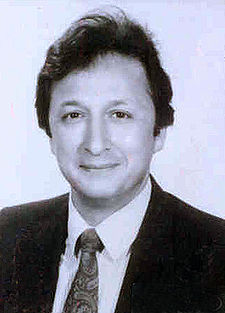Year: 1999
This is in fact how space (size), mass (clock mass), and time (period of time) associated with a wave-like object, come to be interrelated to draw a ?given matter architecture?, through a given orchestration of charges. The laws related to such a structure, are developed in our previous work. Thus, ?mass and space size ought to be structured as inversely proportional to each other?, i.e. if mass in a wave-like object, is, say hypothetically increased, then, the space size in question, should decrease as much. Mass and period of time too, ought to be structured as inversely proportional to each other?, etc.
The mass increase we introduce above, may very well be not hypothetical, and this is indeed what one experiences, when a clock is removed out of a gravitational field; its rest mass, according to the special theory of relativity, would be increased as much as its ?binding energy with the field of the gravitational body of concern?. Its period of time (were this a wave-like clock), according to our quantum mechanical findings, should then shorten as much. Strikingly, this is a quite known occurrence in the scope of the general theory of relativity. It is thus beautiful to discover that, quantum mechanics, due to the matter architecture we disclose, works as the internal machinery of the occurrence regarding the period of time change, predicted by the general theory of relativity. Yet according to our approach, the same phenomenon would occur, in exactly the same way, for ionized wave-like clocks in an electric field, or for wave-like clocks bearing an electric dipole, still in an electric field, or for wave-like clocks bearing a magnetic dipole, in a magnetic field. Similarly, when a muon is bound to a proton, its half life would quantum mechanically increase as much as its binding energy. These are occurrences, substantially identical to that predicted by the general theory of relativity, with however the difference that, now the effect in question, is caused, in a field, other than the gravitational field. Notwithstanding, there is an important discrepancy we arrive at; i.e. when a clock is bound to a gravitational field; its size stretches and its mass decreases, on the contrary to what the general theory of relativity predicts (though the changes in question, thus except their directions, are exactly the same). Note that no mass measurement within the frame of the frame of the general theory of relativity is so far achieved; we propose to clear out the problem, via a technique now available, i.e. by measuring the Rydberg Constant at two altitudes of difference of about 1000 m, on Earth.
One important result we derive is that, there seems to be no singularity for the time behavior in increasingly concentrated matter, thus there are no ?black holes?. An other important result yet, is our prediction about the possibility of the presence of a singularity for an electric charge binding an electric clock: for instance, a nucleus bearing a charge of about 125e seems to stop the disintegration of a muon bound to the ground state of the outcoming muo-atom. Whether this is so or not, needs to be investigated. Further it is interesting to note that our approach makes possible the ?presence of different times?, at a fixed location in space.


